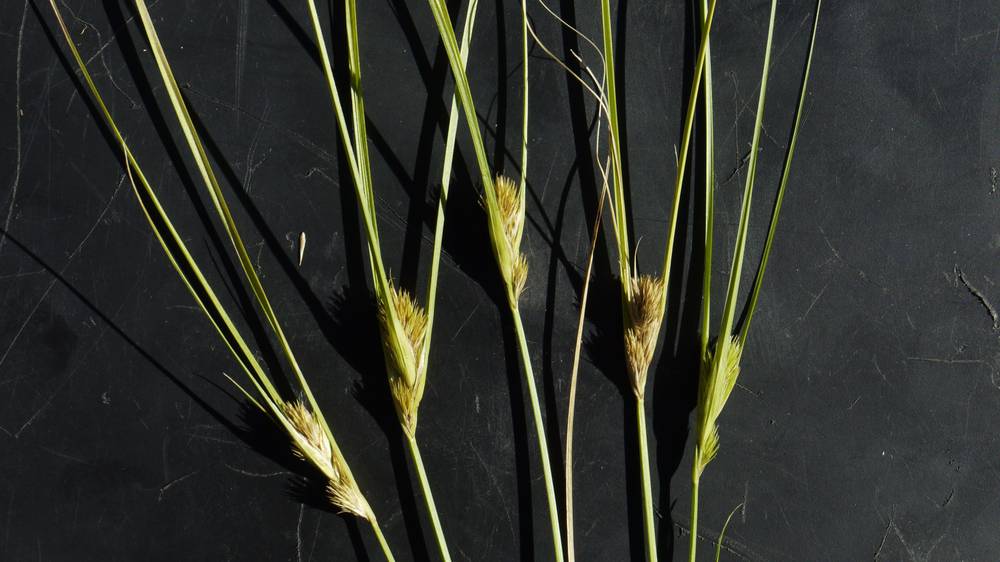
Plants cespitose, 8–40 cm tall.
Leaves sheath fronts white-hyaline; blades 1.2–3 mm wide.
Inflorescences 1.6–3 cm × 7–15 mm, dense and head-like, greenish to golden; lower bracts leaf-like and usually at least 5 times as long as the inflorescence; spikes gynaecandrous.
Female scales 3.5–4.5 mm long, shorter or longer than the perigynia, white- or gold-hyaline.
Perigynia narrowly lanceolate, (4.6)5.5–7.3 × 0.7–1.2 mm, green, straw-colored, or light brown, with 3–12 dorsal veins, ventrally veinless or with up to 9 veins; wing 0.1 mm wide on the body; beak winged and ciliate-serrulate to near the tip; 3–5 mm from achene top to beak tip; stigmas 2.
Achenes lenticular, 1–1.8 × 0.6–0.8 mm.
2n=64.
Open, seasonally wet shores of ponds and rivers. BR. WA; north to AK, east to NY. Native.
Carex sychnocephala is unmistakable with its extremely long, leaf-like inflorescence bracts and its long, narrow perigynia that are more beak than body. Carex athrostachya has elongated inflorescence bracts and may occur in similar habitats, but its bracts and lanceolate perigynia are much shorter.
as described under Carex sychnocephala
Culms aphyllopodic, smoothly 3-angled, 8-40 cm. Leaves: sheath white-hyaline adaxially, summit U-shaped, smooth; distal ligule 0.5-4.3 mm; blades 0-3 per culm, 12 cm × 1.2-3 mm. Inflorescences green or pale brown, 1.6-3 cm × 7-15 mm; proximal internode (2-)4-8 mm, 2d internode 1.7-4 mm; bracts appressed to ascending. Spikes 3-8, densely clustered except, often, the proximal 1-2, obovoid-oblanceoloid, 10-16 × 5-7 mm, base acute to acuminate, apex truncate. Pistillate scales white- or gold-hyaline with green or gold midstripe, lanceolate to ovate, to 3.5-4.5 mm, shorter than or longer than perigynia. Perigynia appressed, green or gold to light brown, conspicuously 3-12-veined abaxially, 0-9-veined adaxially, wing 0.1-0.15(-0.2) mm wide, narrowly lanceolate, (4.6-)5.5-7.3 × 0.7-1.2 mm, 0.3-0.4 mm thick; beak tip white, green, or gold, narrowly flat, distance from beak tip to achene 3-5 mm, ± ciliate-serrulate. Achenes elliptic to ovate, 1-1.8 × 0.6-0.8 mm, 0.3-0.4 mm thick. 2n = 64.Fruiting summer-fall. Wet areas, at least seasonally, open, sandy, silty or peaty shores, banks, on limestone; less than 1500 m; Alta., B.C., Man., N.W.T., Ont., Que., Sask., Yukon; Alaska, Colo., Iowa, Mich., Minn., Mo., Mont., N.Y., N.Dak., S.Dak., Wash., Wis.Because Carex sychnocephala often lacks conspicuous rhizomes and has a small diffuse root system, it may appear to be annual. In some situations, it may actually grow as an annual.